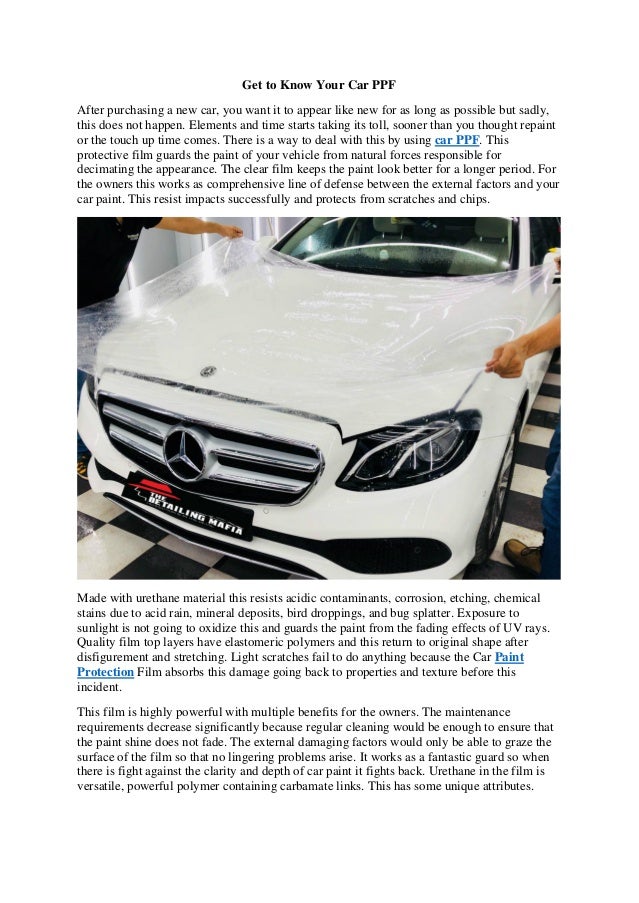
How Long Does it Take to PPF a Car?
As a car enthusiast, I have always been fascinated by the concept of Paint Protection Film (PPF). Having just purchased a brand new car, I was eager to get it protected from the elements and preserve its pristine condition. So, I did my research and reached out to a reputable PPF installer for an estimate. To my surprise, I was quoted a timeline of 3 to 5 days for the complete installation. This got me thinking – how long does it actually take to PPF a car?
The answer, as it turns out, is not as straightforward as one might think. The duration of a PPF installation can vary significantly depending on a number of factors, including the size of the car, the complexity of its design, the number of layers of film being applied, and the skill and experience of the installer. In this article, we will delve into the intricacies of PPF installation, exploring the key factors that influence its timeline and providing tips to help you make an informed decision about protecting your vehicle.
The Process of PPF Installation
Before we delve into the intricacies of PPF installation, it is essential to understand the process itself. PPF is a thin, transparent film that is applied to the exterior of a vehicle to protect it from scratches, chips, and other environmental damage. The installation process typically involves the following steps:
- Cleaning and preparation: The vehicle’s exterior is thoroughly cleaned and prepared to ensure that the film adheres properly.
- Pattern making: A custom pattern is created for the vehicle using computer software.
- Film cutting: The PPF is cut to the exact shape of the vehicle’s panels using a precision cutting machine.
- Film application: The film is applied to the vehicle’s surface and carefully positioned.
- Final curing: The film is left to cure for a period of time to ensure a strong bond with the vehicle’s surface.
Factors Influencing the Duration of PPF Installation
As mentioned earlier, the timeline for PPF installation can vary significantly depending on a number of factors. Here are some of the key considerations:
1. Size of the Car
The larger the car, the more time it will take to install the PPF. This is because the installer will need to cover a larger surface area and will have to make more precise cuts to ensure a perfect fit.
2. Complexity of the Design
The complexity of the car’s design can also affect the duration of the installation. Cars with complex curves and angles will require more time for the installer to pattern and cut the film. Additionally, cars with a lot of body panels will take longer to cover than those with a more streamlined design.
3. Number of Layers of Film
The number of layers of film being applied can also affect the installation time. Most PPF installations involve a single layer of film, but some installers may recommend applying two or even three layers for added protection. Each additional layer will increase the installation time.
4. Skill and Experience of the Installer
The skill and experience of the installer can also play a role in the duration of the installation. An experienced installer will be able to work more quickly and efficiently than a novice, resulting in a shorter installation time.
Tips for Choosing a PPF Installer
When choosing a PPF installer, it is important to consider the following factors:
- Experience: Look for an installer with a proven track record and experience in installing PPF on your type of vehicle.
- Reputation: Ask around for recommendations and read online reviews to get a sense of the installer’s reputation.
- Warranty: Make sure the installer offers a warranty on their work. This will give you peace of mind in case any issues arise after the installation.
- Price: Be sure to compare prices from multiple installers to ensure you are getting a fair deal.
Frequently Asked Questions (FAQs)
Here are some frequently asked questions about PPF installation:
Q1: How much does it cost to PPF a car?
A: The cost of PPF installation varies depending on the size of the car, the complexity of the design, and the number of layers of film being applied. However, you can expect to pay anywhere from $2,000 to $6,000 for a full installation.
Q2: How long does PPF last?
A: PPF typically lasts for 5 to 10 years when properly installed and maintained.
Q3: Can I wash and wax my car after PPF installation?
A: Yes, you can wash and wax your car after PPF installation. However, it is important to use gentle car wash products and avoid using abrasive waxes or polishes.
Q4: Can PPF be removed?
A: Yes, PPF can be removed by a professional installer. However, it is important to note that removing PPF may damage the paint beneath it.
Conclusion
So, how long does it take to PPF a car? The answer is that it depends on a number of factors, including the size of the car, the complexity of the design, the number of layers of film being applied, and the skill and experience of the installer. However, you can expect the installation to take anywhere from 3 to 5 days.
If you are considering protecting your car with PPF, it is important to do your research and choose a reputable installer. By following the tips outlined in this article, you can ensure that you get a high-quality installation that will protect your car for years to come.
Are you interested in PPF installation for your own car? Please feel free to leave a comment below and ask any questions you may have.

Image: www.slideshare.net

Image: www.tintix.com
PPF Installation – Home Page – PPF On My Car Sep 5, 2023Step 3:Apply the Compound:Place the paint protection film on a clean table with the release liner side facing up. Remove the liner and treat the adhesive side of the PPF film with the compound. This compound facilitates adhesion, ensuring a secure bond between the film and the car’s surface. Now, apply the chosen compound to the surface of your